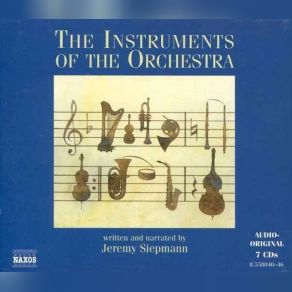Rudy Wiedoeft
Wikimp3 information about the music of Rudy Wiedoeft. On our website we have 1 albums and 1 collections of artist Rudy Wiedoeft. You can find useful information and download songs of this artist.
Biography
[Edit]More than any other single instrumentalist, Rudy Wiedoeft helped popularize the saxophone in the early twentieth century. Wiedoeft also left behind a legacy of compositions for the saxophone that remains an integral part of its literature. Born in Detroit, Wiedoeft played with his parents and siblings in the Wiedoeft Family Orchestra, which eventually resettled to the West Coast. Wiedoeft's original instrument was the violin, but he broke his bowing arm at age ten and switched to clarinet. At the age of 15 Wiedoeft bought his first C Melody saxophone, still then an exotic instrument that relatively few American musicians had succeeded in mastering. By 1917 Wiedoeft was attracting attention as a soloist in the pit orchestra of the Broadway show Canary Cottage. He began to record for Edison that year, and in 1918 composed his signature piece, Saxophobia.
The runaway popularity of Saxophobia fueled phenomenal sheet music sales of the piece and multiplied an unprecedented interest in saxophones in general. The saxophone soon became a symbol of the "Jazz Age" itself, and Rudy Wiedoeft was regarded widely as the master of the instrument, touring as a soloist and remaining immensely popular throughout the 1920s. Wiedoeft led an orchestra, Rudy Wiedoeft and his Californians, and also recorded small group sides with the Wiedoeft-Wadsworth Quartet (with alto saxophonist F. Wheeler Wadsworth) and the Palace Trio (with piano-accordionist Mario Perry.) Aspiring saxophonist and bandleader Hubert Vallee was so in awe of Rudy Wiedoeft that he changed his own name to Rudy Valleé in Wiedoeft's honor. In 1926 Wiedoeft played a jazz concert at Aeolian Hall in New York and toured London with pianist Oscar Levant, making what are likely his best recordings on this occasion for English Columbia.
Rudy Wiedoeft was a flamboyant character who favored Western clothes, including a ten-gallon hat, and well earned a reputation as a boozer. As the 1920s led into the 1930s Wiedoeft's star was on the wane, although he remained popular in England and appeared with some regularity as a guest performer on radio. Wiedoeft invested heavily in an Arizona gold mine before the depression which didn't pan out in the end. Wiedoeft's declining fortunes didn't sit well with his wife, who stabbed him with a butcher knife in a fit of pique in March, 1937. Wiedoeft did recover and reconciled with his better half, but it was cirrhosis of the liver, rather than the stab wound, that finally brought Rudy Wiedoeft down at the age of 47.
Though mostly forgotten today, Wiedoeft remains a legendary figure among saxophone players, and his composed novelty saxophone music is notable for its popular style, wit and tricky technical difficulty. Some of Wiedoeft's many recordings are well worth enjoying for their joyous exuberance and Wiedoeft's own considerable chops, despite being rendered somewhat stiff sounding in comparison to future developments in jazz technique.



